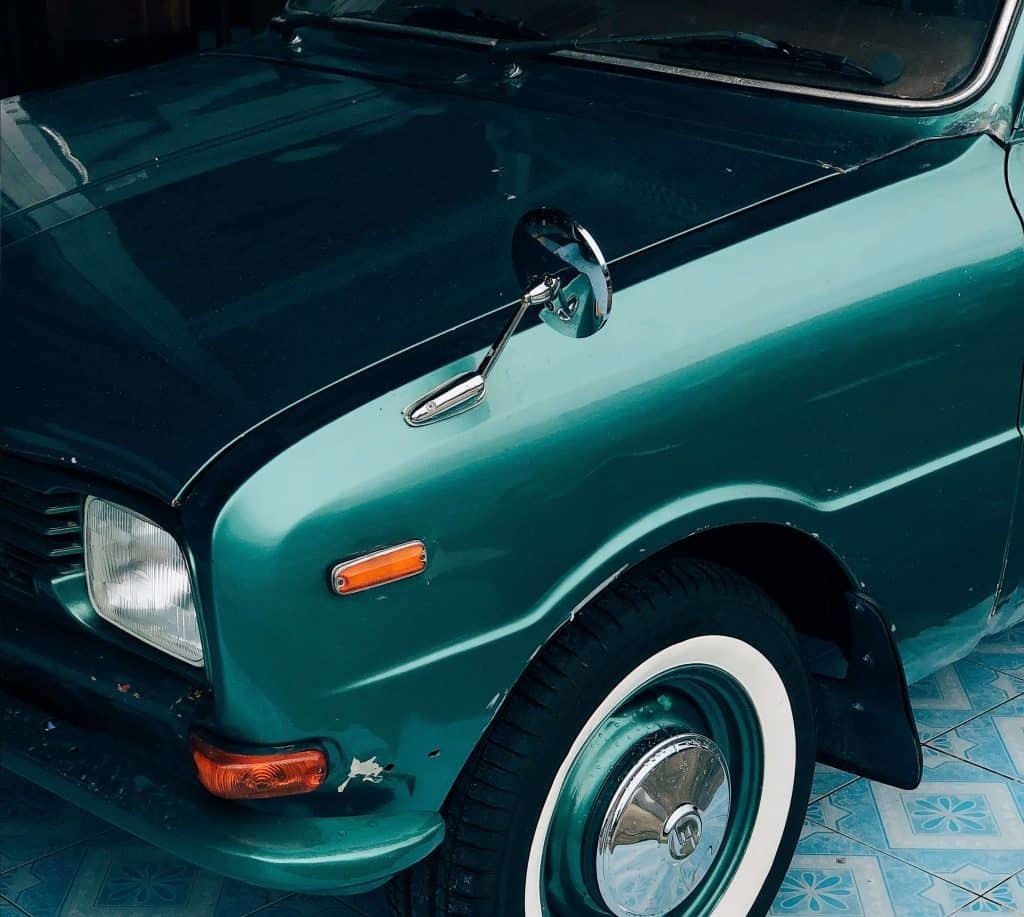White cars are a popular choice for their sleek look and ability to hide dirt better than darker colors. However, scratches on a white car can be particularly noticeable, disrupting the pristine finish and detracting from its overall appearance. Fortunately, most car scratches, even on white paint, can be repaired at home with the right techniques and products.
This guide will walk you through identifying different types of car scratches and provide step-by-step instructions on how to effectively repair scratches on your white car, keeping it looking its best.
Understanding Car Scratches: Types and Identification
Before you start the repair process, it’s crucial to understand the type of scratch you’re dealing with. Car paint typically consists of three layers:
- Clear Coat: This is the top, protective layer that gives your car its shine and protects the color coat underneath.
- Base Coat (Color Coat): This layer provides the actual color of your car, in this case, white.
- Primer Coat: This is the undercoat that helps the paint adhere to the metal body of the car and prevents rust.
Scratches are classified based on which layers they penetrate:
1. Clear Coat Scratches: Minor Surface Imperfections
These are the most common and least severe type of scratches. They only affect the clear coat layer and are often caused by minor abrasions like car washes with brushes, fingernails, or light brushes with bushes.
- Appearance: They appear as fine, hairline scratches on the surface.
- Identification Test: Run your fingernail lightly across the scratch. If it doesn’t catch, it’s likely a clear coat scratch. You can also try the polish test: apply car polish to a microfiber cloth and rub it on the scratch. If it disappears, it’s a clear coat scratch.
2. Base Coat Scratches: Deeper Scratches Exposing the Color
Base coat scratches are deeper, penetrating through the clear coat and into the white paint layer. These are typically caused by sharper objects or more forceful scrapes, like keys or shopping carts.
- Appearance: These scratches are more noticeable and may show a different color underneath the white paint if the primer is showing.
- Identification Test: Your fingernail might catch slightly on the scratch. The polish test might improve the appearance, but the scratch will likely still be visible.
3. Primer Coat Scratches (Deep Scratches): Severe Damage Reaching the Undercoat
Primer scratches are the most severe type, going through all paint layers down to the primer or even the bare metal. These are usually caused by significant impacts, accidents, or deep gouges.
- Appearance: These scratches are deep, wide, and easily visible, often showing a gray or black color of the primer or metal underneath the white paint. Rust can become a concern if bare metal is exposed.
- Identification Test: Your fingernail will definitely catch on these scratches. The scratch will remain visible even after polishing.
Understanding the type of scratch on your car is crucial for choosing the correct repair method.
Essential Tools and Materials for Scratch Repair
Before you begin, gather the necessary tools and materials. Having everything ready will make the repair process smoother and more efficient. Here’s a list of what you’ll likely need:
- Car Wash Soap and Water: For cleaning the car surface.
- Microfiber Cloths: Soft cloths for washing, drying, applying products, and buffing.
- Rubbing Alcohol or Panel Wipe: To ensure a clean surface before applying repair products.
- Scratch Remover Compound: Specifically designed for removing clear coat scratches.
- Car Polish: To restore shine after scratch removal and compounding.
- Rubbing Compound (for deeper scratches): More abrasive than scratch remover, used for base coat scratches.
- Touch-Up Paint (matching your white car’s color code): For base coat and primer scratches. Obtain the correct paint code from your car’s manual or door jamb sticker.
- Fine-Tip Applicator Brushes or Toothpicks: For precise application of touch-up paint.
- 2000-Grit Wet Sandpaper: For leveling touch-up paint.
- 1000-Grit Wet Sandpaper (for deeper primer scratches): For initial sanding of deeper damage.
- Detailing Clay Bar (optional): To remove contaminants before starting the repair.
- Masking Tape: To protect surrounding areas.
- Spray Bottle with Water: For wet sanding.
- Gloves: To protect your hands.
Step-by-Step Guide to Repairing Scratches on a White Car
The repair process varies depending on the scratch type. Follow the appropriate steps for your specific situation:
Repairing Clear Coat Scratches: Surface Level Fix
These scratches are the easiest to fix and often yield excellent results with minimal effort.
Step 1: Thoroughly Clean the Area
Begin by washing the area around the scratch with car wash soap and water. Rinse thoroughly and dry completely with a microfiber cloth. Ensure the area is free of dirt and debris. For optimal cleaning, consider using detailing clay to remove any embedded contaminants.
Step 2: Apply Scratch Remover Compound
Apply a small amount of scratch remover compound to a clean microfiber cloth. Using circular motions and light to medium pressure, rub the compound into the scratch. Work in small sections and continue buffing until the scratch appears to diminish or disappear.
Step 3: Polish the Repaired Area
After the scratch is removed, use a clean microfiber cloth to apply car polish to the area. Buff in circular motions to restore the shine and enhance the paint finish. This step will also remove any微小的 swirls left by the scratch remover.
Repairing Base Coat Scratches: Addressing Deeper Imperfections
Repairing base coat scratches requires a bit more work and potentially touch-up paint.
Step 1: Clean and Prepare the Scratch
Clean the area thoroughly with car wash soap and water, and dry it. Use rubbing alcohol or panel wipe to remove any remaining wax or polish from the scratch and surrounding area. This ensures proper adhesion of touch-up paint.
Step 2: Apply Touch-Up Paint Carefully
Shake the touch-up paint bottle well. Using a fine-tip applicator brush or toothpick, carefully apply thin layers of touch-up paint directly into the scratch. Avoid applying too much paint at once, as it can lead to drips and unevenness. Allow each layer to dry completely before applying the next. It might take several thin coats to bring the paint level up to match the surrounding paint.
Step 3: Level the Touch-Up Paint with Wet Sanding
Once the touch-up paint is completely dry (usually after 24-48 hours), you may notice it’s slightly raised above the original paint. Wet sanding helps to level it. Soak 2000-grit sandpaper in water for a few minutes. Wrap a small block or your fingertip with the wet sandpaper and lightly sand the touch-up paint using straight, even strokes, keeping the area wet by spraying water from a spray bottle. Avoid sanding the surrounding original paint. Sand until the touch-up paint is level with the surrounding clear coat.
Step 4: Use Rubbing Compound to Refine
Apply a small amount of rubbing compound to a microfiber cloth and buff the sanded area using circular motions. This will remove the sanding marks and further level the paint.
Step 5: Polish to Restore Shine
Finally, apply car polish to a clean microfiber cloth and buff the area to restore the gloss and blend the repair seamlessly with the surrounding paint.
Repairing Primer Coat Scratches (Deep Scratches): Professional-Level Care
Deep scratches that reach the primer are more challenging to repair and may require professional intervention for a perfect finish, especially on a white car where imperfections can be more visible. However, you can still improve their appearance at home.
Step 1: Thorough Cleaning and Initial Sanding
Clean the area thoroughly. If there are any rough edges or rust (especially important to address quickly if the scratch reached bare metal), use 1000-grit wet sandpaper to gently smooth them out. Clean the area again after sanding.
Step 2: Apply Touch-Up Paint in Layers
Apply touch-up paint in thin layers, just like with base coat scratches, allowing each layer to dry completely. You might need more layers for deep scratches to fill the scratch up to the level of the surrounding paint.
Step 3: Wet Sand to Level the Paint
Once the touch-up paint is fully dry, use 2000-grit wet sandpaper to carefully level the touch-up paint with the surrounding clear coat, as described in the base coat scratch repair steps.
Step 4: Rubbing Compound and Polishing
Use rubbing compound followed by car polish to refine the repair and restore the shine, blending the repaired area with the rest of the white paint.
Important Note: For very deep scratches or if you are uncomfortable with wet sanding and touch-up paint application, especially on a white car where paint matching is critical, it’s best to consult a professional auto detailing or body shop.
Tips to Prevent Scratches on Your White Car
Prevention is always better than cure. Here are some helpful tips to minimize scratches on your white car and keep it looking pristine:
- Regular Waxing: Apply car wax regularly (every 2-3 months) to add a protective layer to the clear coat. Wax acts as a barrier against minor scratches and environmental contaminants.
- Park Smart: Park in garages or carports whenever possible to shield your car from the elements and potential hazards like tree branches or shopping carts.
- Careful Washing: Wash your car regularly using high-quality car wash soap, a microfiber wash mitt, and the two-bucket method to minimize swirl marks and scratches during washing.
- Microfiber Drying: Always dry your car with soft microfiber towels to avoid scratching the paint.
- Avoid Automatic Car Washes with Brushes: These can cause swirl marks and scratches, especially on softer white paints. Opt for touchless car washes or hand washing.
- Consider Paint Protection Film (PPF) or Ceramic Coating: For maximum protection, consider investing in PPF or ceramic coating. These provide a more durable barrier against scratches, chips, and environmental damage.
- Use a Car Cover: If you park your car outdoors frequently, use a car cover to protect it from dust, debris, and potential scratches.
Final Thoughts on White Car Scratch Repair
Repairing scratches on a white car is achievable for most car owners with patience and the right approach. By understanding the type of scratch and following the appropriate repair steps, you can effectively restore your car’s finish and maintain its value. While DIY methods can handle many scratches, remember that for deep or complex damage, professional auto detailing services offer the expertise and tools to achieve flawless results. Keeping your white car scratch-free through preventative measures will always be the best strategy to maintain its beautiful appearance for years to come.


